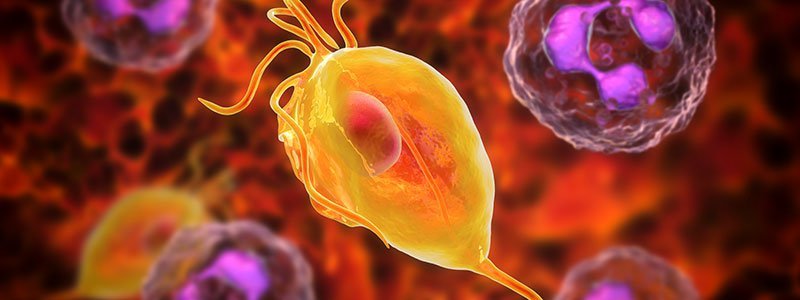
Learn the six most commonly used lasers in gynecological surgery.
LASER (light amplification by the stimulated emission of radiation) is used to treat gynecological disorders such as:
It is used in obstetrics to aid in the management of problems in twin pregnancies such as twin-to-twin transfusion. Fetoscopic selective laser ablation is done to coagulate and disconnect the connecting blood vessels to stop sharing of blood between both fetuses.

6 lasers in gynecology
Six commonly used lasers in gynecology include:
- Carbon dioxide (CO2) laser: A laparoscope or colposcope is used in combination with a CO2 laser. The vulva, vagina, or cervix can be treated with a CO2 laser in an office setting under the influence of local anesthesia.
- CO2 laser has been recognized as an efficient modality to treat the following:
- Lower genital tract intraepithelial neoplasia
- Multifocal forms of human papillomavirus
- Endometriosis
- Condylomata in women who are pregnant
- Bartholin gland cysts and abscesses
- Ablation of pigmented follicular cysts of the vulva
- Excision of an imperforate hymen
- Excision of a vaginal septum
- Excision of hypertrophied labia minora
- Vaginal polyps
- Nabothian cysts
- Type III female genital mutilation
- CO2 laser has been recognized as an efficient modality to treat the following:
- Neodymium-doped yttrium aluminum garnet (Nd:YAG) laser:
- Chronic menorrhagia can be treated with Nd:YAG laser either vaginally through a hysteroscope or intraabdominally through a laparoscope. The endometrium is damaged to the depth required to ablate the basal layer, and bleeding is controlled by coagulation. The purpose of endometrial ablation with Nd:YAG laser for the treatment of chronic menorrhagia is to avoid hysterectomy and/or give full amenorrhea in women who are of childbearing age or planning for pregnancy.
- Intrauterine lesions such as submucous and subserosal uterine fibromyomas are treated using Nd:YAG laser.
- Lesions in the lower genital tract such as cervical intraepithelial neoplasia are treated with Nd:YAG laser.
- Erbium-doped yttrium aluminum garnet (Er:YAG) laser:
- Er:YAG laser is used for the treatments of:
- Vaginal laxity
- Stress urinary incontinence
- Mixed urinary incontinence
- Pelvic organ prolapses
- Vaginal atrophy
- Relaxation of the vaginal tissues, followed by prolapse of the vaginal walls, bladder, or rectum, is a normal aging process.
- Pregnancy and vaginal birth are significant contributors.
- Obesity and lack of proper muscular activities are two more variables that may affect the development of relaxation.
- Er:YAG laser beam is absorbed into the surface layers of the vaginal skin, increasing temperature. Even when applying topical anesthetic, the heat might be felt during treatment. The energy diffuses deeper into the tissues, affecting the collagen of the soft tissue beneath the skin, leading to vaginal collagen remodeling and synthesis, repairs, and restoring pelvic floor function.
- This is a minimally invasive method that is less effective than surgical procedures but has fewer adverse effects.
- Er:YAG laser is used for the treatments of:
- Potassium-titanyl-phosphate (KTP) laser: KTP laser is used in the treatment of benign peritoneal mesothelioma, which is a rare type of noncancerous (benign) tumor. It can cause symptoms such as abdominal or pelvic pain and tenderness. Additionally, it can lead to constipation and difficulty passing urine (urinary hesitancy). Successful treatment with KTP laser during laparoscopy provides relief of symptoms and prevents the recurrence of benign multicystic mesothelioma. However, the recurrence rate of benign multicystic mesothelioma is noted to be more than 50 percent, so regular follow-up is recommended.
- Argon laser: Women with pelvic endometriosis are treated with argon laser. Argon laser is used with laparoscopy to remove the unwanted endometrial tissue by the laser. After the treatment with argon laser, several women had alleviation of pelvic pain partially or completely. Argon laser is a straightforward, effective, and safe therapeutic option for mild to severe endometriosis.
- Diode (semiconductor) laser: Diode laser is used to treat deep endometriosis and infertility. Women with a T-shaped or Y-shaped dysmorphic uterus (externally normal but internally the uterine cavity is abnormal) suffer from infertility. Due to abnormally narrow uterine cavity, they suffer from recurrent implantation failure or recurrent pregnancy loss. Diode laser hysteroscopic metroplasty when performed under general anesthesia improves reproductive outcomes in a T-shaped or Y-shaped dysmorphic uterus.

QUESTION
What is pelvic inflammatory disease (PID)? See Answer
Medically Reviewed on 5/18/2022
References
Nimble laser devices for minimally invasive gynecologic surgery: https://www.contemporaryobgyn.net/view/nimble-laser-devices-minimally-invasive-gynecologic-surgery
Carbon Dioxide Laser Surgery in Gynecology: https://emedicine.medscape.com/article/272382-overview
Lasers in gynaecology – Are they still obsolete? Review of past, present and future applications: https://www.ncbi.nlm.nih.gov/pmc/articles/PMC7363248/